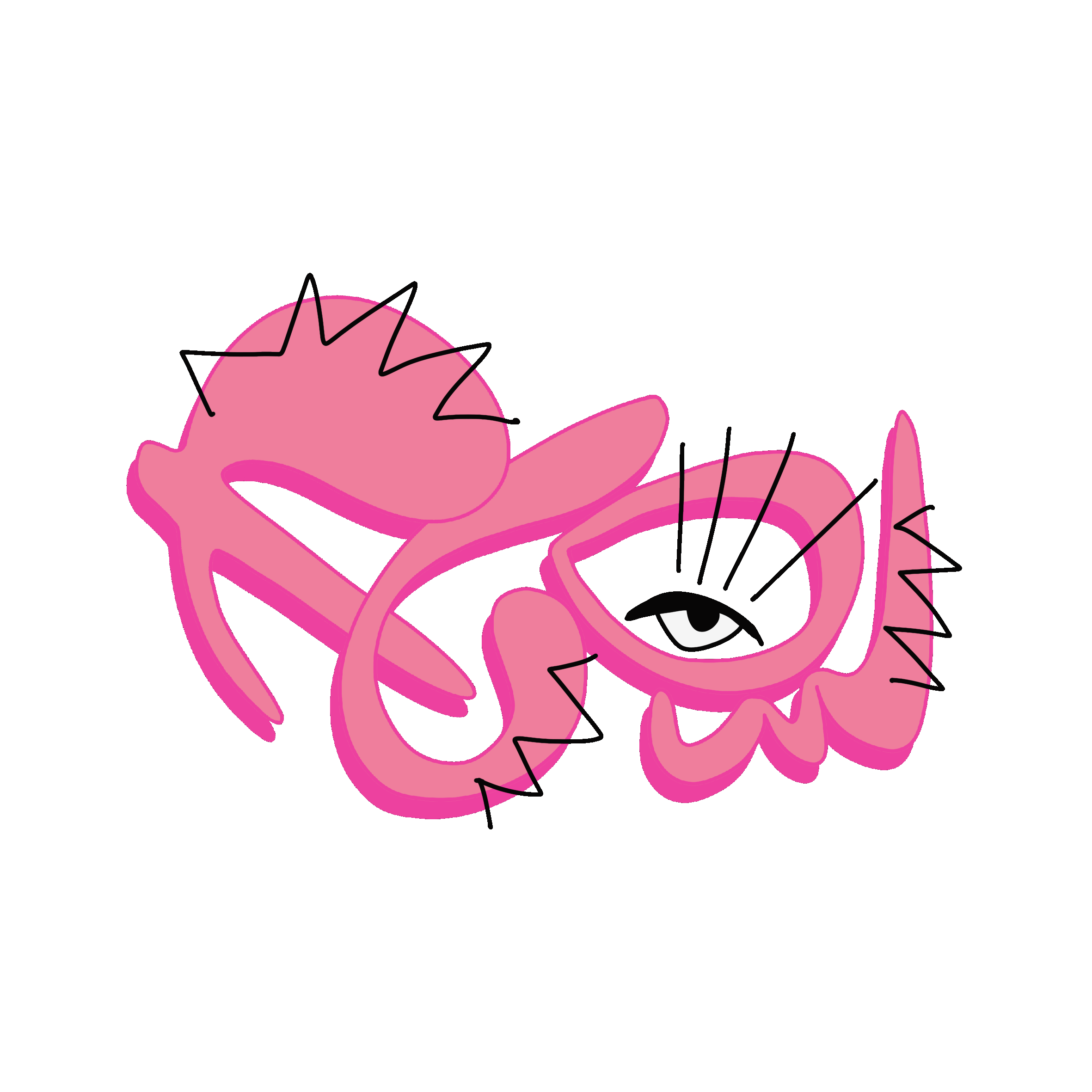A Playful Approach w/Anna
 |  |  |  |
|---|---|---|---|
 |  |

2023/ Analogue: 800 x 940mm/ Tempera on Wood
English
When, what effort and intention lies behind a form for it to be beautiful? What can a creator change about it? Or is "liking" not entirely in the interest of the recipient? This painting is similar to antidesign: a counter-movement in design to the "Gute Form", the attempt to find the "one" answer to "everything", when designers in the 1950s tried to rationalise design with its function. It's just much simpler, more playful and perhaps therefore more accessible, although it's much more about the initial process than the final image.
As I have learnt to appreciate the process, the partly unconscious emergence of the forms, the gliding of the brush on the canvas, especially in my last works, I wanted to take the process-oriented work to a climax with this work. My girlfriend Anna and I painted this picture together. We each had a brush and we both had the same colours in front of us. She started to paint a shape, I continued. Always alternating. Not too much instruction and, above all, without verbal communication. The result was an exchange between us that was limited purely to emotions and shapes.
Here we did something that is familiar from a different context. For my part, I often did something like this at school with the person sitting next to me when the lessons weren't quite so exciting. This intuitive, almost playful approach (playful doesn't always mean childish and childish doesn't automatically mean simple) allowed us to get fully involved in the activity without all the mumbo-jumbo. In order to take art, at least the art that I create, out of the level of royalty (in which it unfortunately is far too often) and make it more accessible to everyone.
-> Ideally, you would now grab a paintbrush & your favourite person and paint your own piece :)
Deutsch
Ab wann, wegen welchem Aufwand und was für eine Intention muss hinter einer Form liegen, dass sie schön ist? Was kann ein*e Schaffende*r daran ändern? Oder liegt das „Gefallen“ nicht ganz im Auge der Betrachtenden. Ähnlich dem Antidesign (eine Gegenbewegung im Design zu der „Guten Form“, dem Versuch die „Eine“ Antwort auf „Alles“ zu finden, als Designer*innen in den 50er Jahren teils probierten Gestaltung allen mit Funktion zu rechtfertigten) ist dieses Bild. Bloß wesentlich einfacher, verspielter und vielleicht auch deswegen leichter zugänglich, wobei es hier viel mehr um den Prozess, als um das letztendlich entstandene Bild geht.
Da ich vor allem in meinem letzten Werken den Prozess, das teils unbewusste Entstehen der Formen, das Pinselgleiten auf der Leinwand, stark zu schätzen gelernt habe, wollte ich mit diesem Werk das prozessorientierte Arbeiten auf den Höhepunkt treiben. Meine Freundin Anna und ich haben dieses Bild in Kooperation gemalt. Jeder hatte einen Pinsel und wir hatten beide dieselben Farben vor uns stehen. Sie hat begonnen eine Form zu malen, ich habe angesetzt und weitergemacht. Immer abwechselnd. Nicht zu viel vorgeben und vor allem ohne verbale Kommunikation. So entstand ein Austausch zwischen uns der rein auf Emotionen und Formen beschränkt war.
Hier haben wir etwas gemacht, was man vor allem aus einem anderen Kontext kennt. Ich für meinen Teil habe so etwas oft in der Schule mit meinen Sitznachbar*innen gemacht, wenn der Unterricht nicht ganz so spannend war. Durch diesen intuitiven, fast schon spielerischen Ansatz (spielerisch heißt nicht immer kindlich und kindlich heißt nicht automatisch einfach) konnten wir uns ganz auf das Tun einlassen, ohne den ganzen Hokuspokus. Um eben auch Kunst, zumindest Kunst welche ich erschaffe, aus der Hoheitsebene (in der sie leider viel zu oft ist) zu holen und zugänglicher für alle zu machen.
-> Idealerweise würdest du dir jetzt einen Pinsel und deine Lieblingsperson schnappen und euer eigenes Bild malen :)

